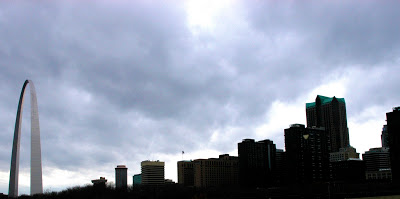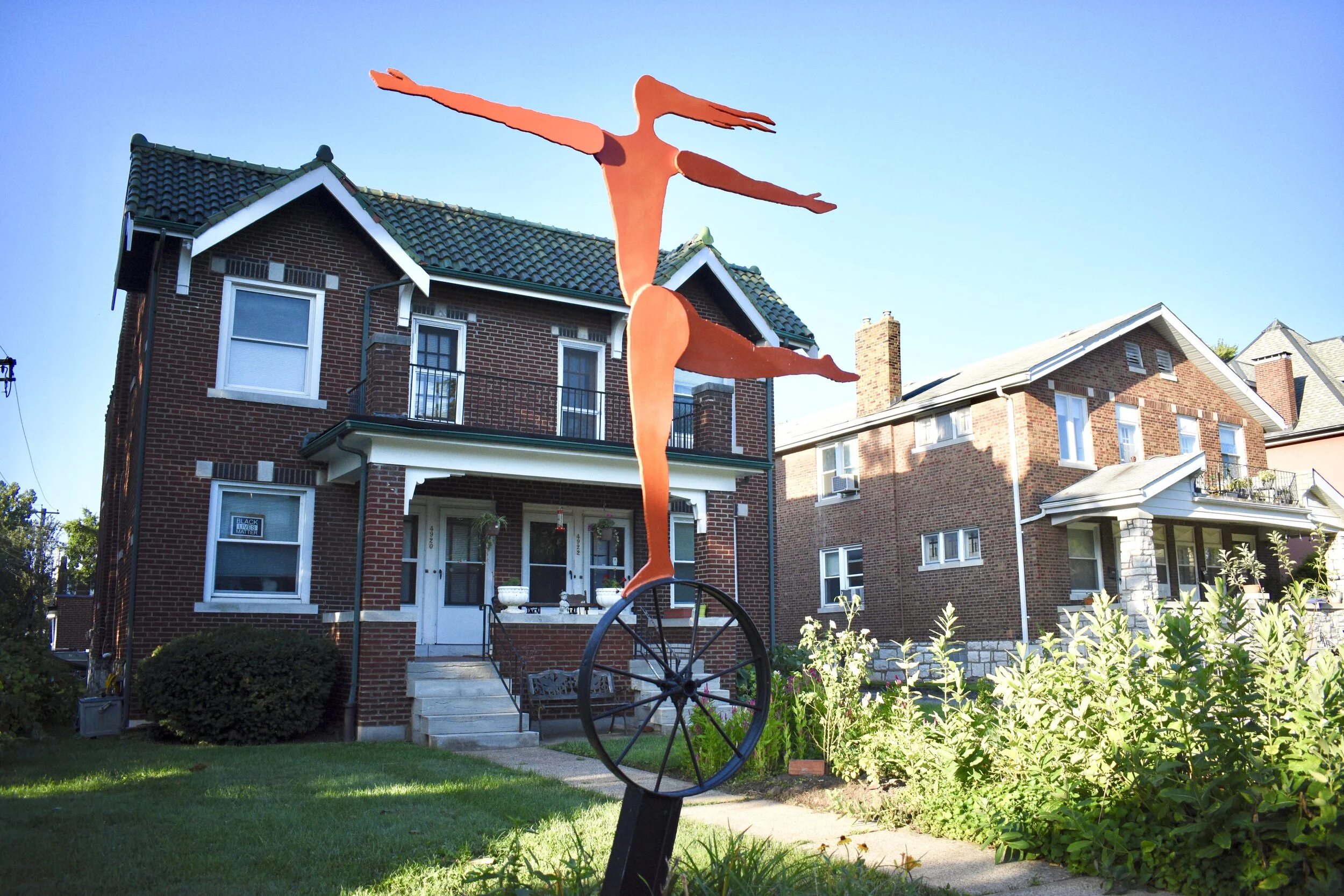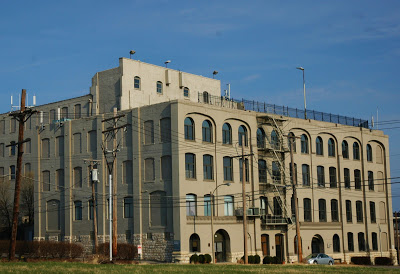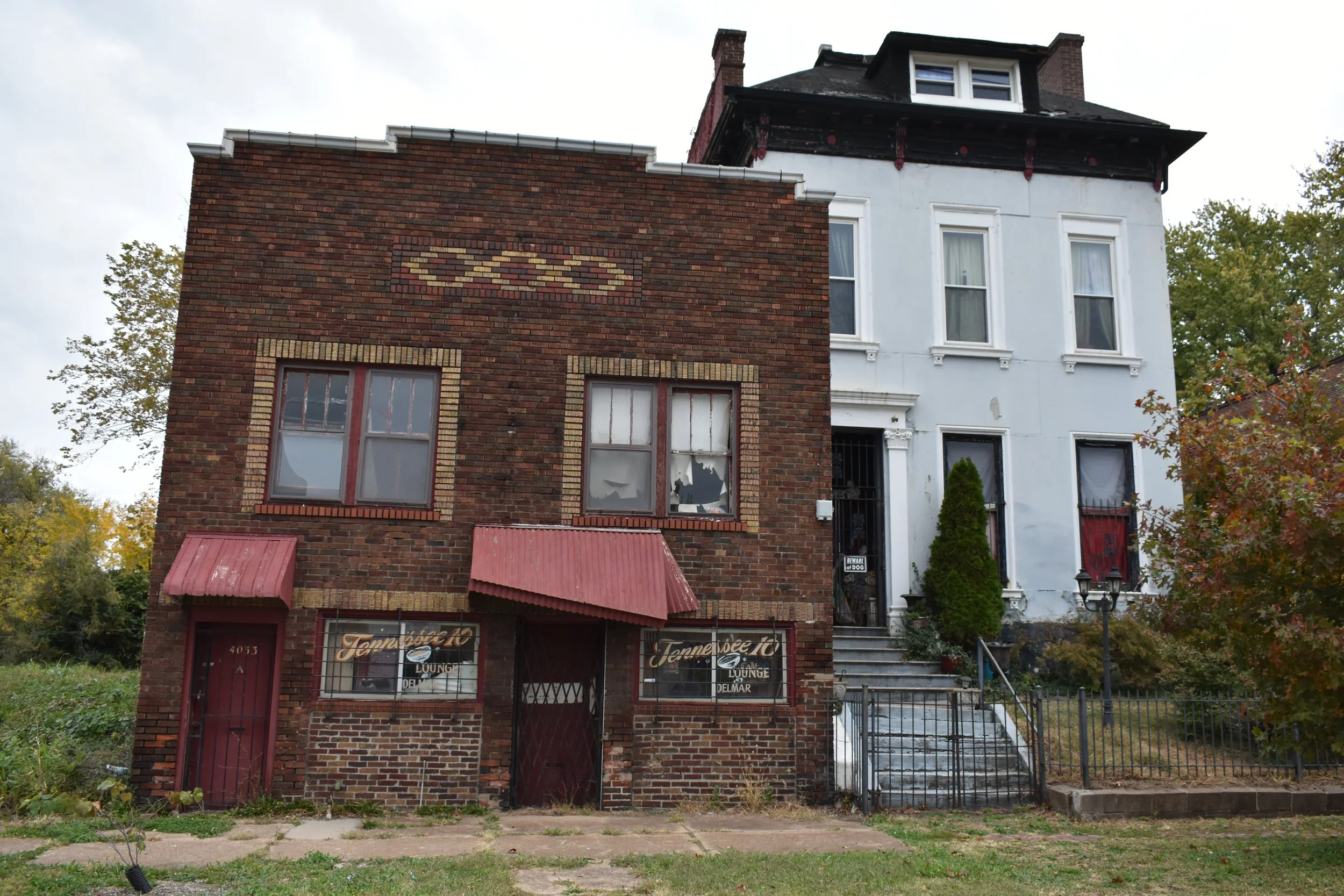Downtown truly is the door step of the city. It's our face to the world. Ask someone about St. Louis and they'll probably say St. Louie...yeah, the Arch. For better or worse, DT defines the St. Louis metropolitan region as a whole. The DT experience is the St. Louis experience for many, if not most suburbanites, regional visitors, tourists and even some citizens of St. Louis. It's a fact that many in the region refer to the entire City of St. Louis as "Downtown"...so the stakes are high. A vibrant DT means a vibrant STL to most. A 3X gain of residents in Kings Oak will not have nearly the same impact as a similar gain in DT would...and for that, I'm optimistic for St. Louis' future for first impressions, etc. The historic tax credits have largely made this boost in residents happen, that and the growing trend of people wanting to live in cities. In spite of the cities free wheelin' issuance of demolition permits and lust for parking lots, many vacant warehouse, office and factory buildings have been transformed to lofts, apartments, condos, new office/retail space, etc. It's been an amazing transformation to witness. DT was dead in the 1980's. When I moved here in 1994, it was gritty and vacant and starkly surreal, like a mothballed outdoor museum for cool buildings. Now it's everything from gritty to swanky...yet still cool. It's been a damn good 20 years for DT St. Louis. Despite all the job and tax base poaching that Clayton, Missouri and other cities in the suburbs have done to St. Louis over the last 50 years, DT is still the Central Business District and must continue to lure business, jobs and residents if it's to stay on it upward trend.
The Central West End Neighborhood
CWE is arguably St. Louis' greatest, most vibrant neighborhood. It's got so much to offer that almost any right-minded city lover would desire to call the CWE home. Geez where do I start?
How about the location? CWE has direct proximity to Forest Park, easy access to I-64, the previously mentioned Metrolink/MetroBus access, a world-class hospital complex, multiple independent and chain restaurants, independent shopping/galleries, bars, mixed architecture, civilized movie theatre, public library branch, walkable streets, mid-century mod buildings, history, economic/racial/ethnic diversity, you name it....CWE has it all. It's the perfect neighborhood for a date night, a must-stop on visitor tours of St. Louis and a great spot for lunch/dinner or a snack before heading to Downtown, Forest Park or many of the other nearby draws of Grand Center, Midtown Alley, etc. The presence of Barnes/Jewish, Children's Hospital and Washington University Medical School also make this a powerhouse employment area.
The Baden Neighborhood
Check out the roundabout at the convergence of Goodfellow, Halls Ferry, Riverview, and Lewis and Clark Blvd; it reminds me of the Tempest screen. There just aren't that many roundabouts in St. Louis, but this one is very cool. The St. Louis County cities of Bellefontaine Neighbors and Jennings abut Baden to the north and west.
Baden became part of St. Louis in 1876, but was never incorporated as a city prior to that date. It has the distinction of being a north side residential neighborhood that had a GAIN in population at 3% in the 2000 Census count. However, that momentum was not sustained from 2000-2010 when Baden lost 14% of its residents. The 2010 Census data showed the racial demographics of 92% black and 6% white. St. Louis continues to take a beating in loss of residents. People are voting with their feet and Baden, like nearly all neighborhoods, felt that sentiment.
The Greater Ville Neighborhood
I can only imagine what the Greater Ville must have been like when this was a bustling, successful neighborhood.
This seems to be another neighborhood with an identity crisis, it could simply be called the Ville, no? In fact, the neighborhood link on the city website does link to the Ville's site for information.
This has got to be one of the most neglected and struggling parts of town. I love it here and hate it here all at the same time. I can't sum it up in writing how I feel when I read about the great history of places like the Ville and then go visit them and see the overwhelming decay and negativity.
The Carondelet Neighborhood
As you can see I-55 butchered Carondelet and divided it in two. It's a rough cut that makes access nearly impossible by foot/bike. It's a sad part of Carondelet's long history.
Carondelet used to be an independent city founded in 1767 by Clement DeLore de Treget, until St. Louis absorbed it in 1870. The Patch neighborhood was also originally part of Carondelet, but is now a distinct neighborhood. Most St. Louisans think of the Patch as Carondelet anyhow, and it's branded as such, so why not just merge them? The charming area around the Ivory Theatre which includes several cafes and bars has a big "City of Carondelet" painting in the middle of the road.
The Dutchtown Neighborhood
Dutchtown was the first neighborhood I moved to when coming to St. Louis in 1994. I think my rent was around $225/month. Not bad for a recent college grad with no money. I fell in love with the City with Dutchtown as my home base. At that time I rode my bike everywhere and Dutchtown was VERY walkable and easy to get around with many intra-neighborhood businesses, etc. It was a nice place to call home then and now.
Dutchtown takes its name from from Deutsch, i.e., "German", as it was the southern center of German settlement in St. Louis in the early 19th Century. The neighborhood was designed with pride and craftsmanship; it was built to last.
The Riverview Neighborhood
Riverview was one of the few neighborhoods to gain residents in the 2010 Census count. There are now 304 people calling Riverview home! 69% black, 29% white and 2% Hispanic/Latino.
This is a unique place in St. Louis: it's shape, its topography, etc. It's really just a narrow sliver of land wedged between the St. Louis County cities of Glasgow Village, Riverview (the Village) and Bellefontaine Neighbors and of course the mighty Mississippi River. There's a lot going on in this little neighborhood of St. Louis.
The Bevo Mill Neighborhood
Bevo Mill is charming mix of smaller single family homes and apartment buildings for largely German immigrant clay mine and factory workers. Once a beacon of immigration of Bonsians/Croats/Mesopotamians/Roma for nearly a decade and a half, now we’re back to the modern day gamish of St. Louis people and places. A true mixed neighborhood that is charming and largely stable.
The Jeff Vander Lou Neighborhood
Anyhow, the obvious guess is that Jeff Vander Lou takes it's name from Jefferson and Vandeventer which serve as east/west boundaries, but where does the "Lou" come from? Sure St. Louis Avenue runs through the neighborhood, but Natural Bridge is the northern boundary and Delmar the southernmost boundary. Maybe we should change the name to a more contemporary and accurate moniker such as Natty Del Vandy Jeff...just kidding...I think Jeff Vander Lou is cool sounding and next to the Patch, is my favorite St. Louis neighborhood name.
An acquaintance alerted me to keep my eye out for some of the coolest street names in the entire city right in JVL. It's true there are some gems, and I feel I've gotta give a tribute to some of my favorites...
The Tower Grove South Neighborhood (Updated March, 2017)
GS is a major urban success story of the last 15 years. It's got the makings of the perfect St. Louis neighborhood: a stunning park within walking distance, 2 major commercial districts, fabulous architecture and a strong neighborhood association. The bad news is, it experienced a 10% loss of residents from 2000-2010, even our nicest neighborhoods continue to post losses as TGS is down to 13,333 people. Anyhow, this is still a highly desirable neighborhood and I'd put it up there as a clear top 10 for St. Louis places to live, work and play. The neighborhood has a progressive feel.
The Southwest Garden Neighborhood
Southwest Garden is really a tale of two neighborhoods. First is the area east of Kingshighway which is dominated by tree-lined streets with gorgeous multifamily properties. It is more similar to the Shaw neighborhood. The section west of Kingshighway seems very similar to the Hill. But it does have its own identity, .
The O'Fallon Neighborhood
It will be interesting to see if the membership rates are the same at both locations, or if they stick it to the south siders. It will also be interesting to see if they have the YMCA run the facility. I hope they do, because they run a tight ship. The proximity of this new recreation complex along with the fact that the neighborhood has a bright, dedicated young alderman, Antonio French, who I am confident can lead the area in the right direction. And to add to the positive trajectory of the area, all the buildings in the O'Fallon neighborhood will be in a historic district as of 2012. It will be nominated as a National Register of Historic Places. See the full story at the Preservation Research Office.
This is great news, as there are some AMAZING homes just south of O'Fallon Park. They are among the best looking mansions in the city rivaling Holly Hills Boulevard, Lindell, DeBaliviere and other great areas, but O'Fallon has not fared as well as far as retaining people with the means and dedication to maintain the architectural heritage.
The Downtown West Neighborhood
Most people in the region, and even city residents consider DTW to be Downtown. In fact, DTW doesn't even have it's own link on the city website, it simply points to the DT website. This is yet another data point toward my hypothesis that St. Louis could consolidate many of its neighborhoods down from 79 to ~50. But make no mistake, this is an important part of the city, and one of our greatest, most high-profile parts of town. It is a distinct neighborhood gaining population and is an extremely important connection between Downtown and the burgeoning Midtown area giving us a more and more impressive central corridor.
The Wells/Goodfellow Neighborhood
As with any neighborhoods in a state of severe residential decline, there are signs of when the area was thriving and quite dense; but sadly, those days are over. There were the once bustling commercial corridors of MLK, Natural Bridge, Goodfellow, Union and St. Louis Avenue, as well as signs of many intra-neighborhood corner stores...
The Vandeventer Neighborhood
The Fairground Park Neighborhood
It's hard to think about the massive losses we've experienced as a city over the years. It's hard to believe we let this happen. What a disposable society we are that allows this kind of architecture and history to fall by the wayside. Fairground Park is crumbling and is a tad threatening in more ways than one. This has been a volatile place when it comes to race relations in St. Louis going back to the 1940s. There was some major violence back in 1949 when the city ordered the desegregation of the swimming pools in the park. After a couple days of violence and blood shed, the city decided to go back to segregation. There's an excellent retelling of the story summarized on the Missouri History Museum website...
The North Riverfront Neighborhood
The vast majority of structures are surface lots for trucking distribution and other operations. Metal scrap yards, recycling facilities, salvage yards and contemporary metal sheds housing businesses of all kinds. I tried to point out the areas with a little more character, so you won't get a real feel for what the neighborhood looks like...which is frankly quite bland. For instance the Dial Corporation has a huge facility that makes detergents; but it's really nothing special to look at. Another thing to point out is that much of the property in North Riverfront is private and access is a challenge. The best way to take in this "neighborhood" (really an industrial area) is from atop the hills of Calvary Cemetery or from the Riverfront Trail. If you haven't checked out the 10 mile asphalt Riverfront Trail, you must. It takes you right along the Mississippi River in some spots and and also skirts some impressive industrial operations allowing you sight access to some otherwise unattainable areas. A ride north of Downtown will serve as an important reminder that St. Louis is still a working river town.
Hyde Park Neighborhood
There are lots and lots and lots of dilapidated and crumbling structures new and old in Hyde Park today. But I just can't put my finger on the way these neighborhoods make me feel. On one hand, it's clearly depressing to witness, but on the other hand, you can't help but notice the beauty and care that went into making this neighborhood an important place. The Germans that settled here did there best at making this a European-like self-contained turn of the 19th Century masterpiece of a neighborhood. Their diligence and good design can still be felt today, and it's awe inspiring. There's evidence of some positive efforts from those that have stuck it out over the years and maybe some new investment going into maintaining this place. Maybe enough to stabilize it for future generations to try to figure it out and fix it so it's a show place and contributor to St. Louis status as the premier American city of neighborhoods.
The Peabody Darst Webbe Neighborhood
The Kingsway West Neighborhood
Not unlike Kingsway East, I would describe the current state of Kingsway West in the area between "holding on" and "stable". It's seen better days, but there are still businesses serving the area, a decent park with tennis courts, ball fields, a football field and indoor/outdoor swimming pool in the Wohl Community Center and enough housing stock in decent condition to provide hope for a bright future.






















